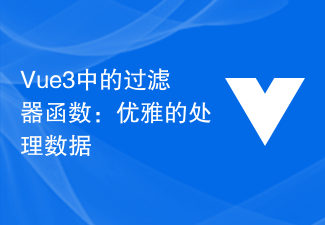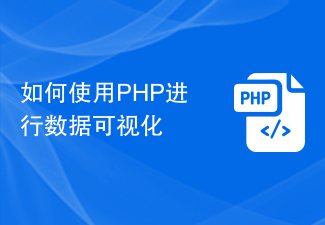 Backend Development
Backend Development Golang
Golang Comparing Golang and Python crawlers: analysis of differences in anti-crawling, data processing and framework selection
Comparing Golang and Python crawlers: analysis of differences in anti-crawling, data processing and framework selection
In-depth exploration of the similarities and differences between Golang crawlers and Python crawlers: anti-crawling response, data processing and framework selection
Introduction:
In recent years, with the development of the Internet With rapid development, the amount of data on the network has exploded. As a technical means to obtain Internet data, crawlers have attracted the attention of developers. The two mainstream languages, Golang and Python, each have their own advantages and characteristics. This article will delve into the similarities and differences between Golang crawlers and Python crawlers, including anti-crawling responses, data processing, and framework selection.
1. Anti-crawling response
Anti-crawling technology is an important challenge that web crawlers must face. As a popular scripting language, Python has a wealth of third-party libraries and frameworks, providing various anti-crawling solutions. For example, selenium can be used to simulate browser operations and dynamically load data, bypassing the website's JavaScript. In addition, Python's request library also provides Cookie and User-Agent settings, which can be disguised as different browsers for access, increasing concealment. By processing the request header information, the anti-crawling mechanism of the website can be effectively circumvented.
Different from this, Golang is an emerging statically typed language, and developers need more manual processing during the crawling process. Although there are not as rich third-party libraries as Python, Golang's strongly typed language features can provide better performance and concurrency support. The anti-crawling solution mainly uses HTTP request packages such as "requests", "http", etc. to manually set request headers, cookies, User-Agent and other information. In addition, Golang also provides rich concurrent programming mechanisms, such as goroutine and channel, making it easier to crawl multiple pages at the same time.
To sum up, Python is more convenient and faster in anti-crawling, while Golang is more flexible and efficient.
2. Data processing
Data processing is a key link in the crawler process. Python has a wealth of data processing libraries and tools, such as BeautifulSoup, pandas, and numpy. Through these libraries, we can easily parse and process HTML, XML and other documents, extract the required data, and perform various complex data analysis, cleaning and visualization operations. In addition, Python also supports various databases, such as MySQL, MongoDB, etc., to facilitate the storage and query of crawled data.
On the contrary, Golang is relatively simple in data processing. Although Golang also has similar libraries, such as goquery and gocsv, its ecosystem and third-party library support are weaker than Python. Therefore, Golang usually needs to write its own code for parsing, processing and storage in data processing.
Overall, Python is more convenient and powerful in data processing, while Golang requires more code writing and processing.
3. Framework selection
The choice of framework has an important impact on the development efficiency and performance of the crawler. In Python, there are many mature frameworks to choose from, such as Scrapy and PySpider. These frameworks provide automated crawler processes and task scheduling, reducing developers' workload. At the same time, they also provide powerful data processing capabilities and concurrency capabilities.
Golang is relatively new when it comes to crawler frameworks, but there are some good options. For example, colly is a feature-rich and highly configurable crawler framework that provides powerful concurrency and data processing capabilities. In addition, libraries such as gocolly and go-crawler also provide similar functions.
To sum up, Python has more mature and rich choices in crawler frameworks, while Golang has relatively few frameworks, but there are already many potential options.
Conclusion:
This article deeply explores the similarities and differences between Golang crawlers and Python crawlers in terms of anti-crawling response, data processing and framework selection. Overall, Python is more convenient and powerful in anti-crawling and data processing, while Golang is more flexible and efficient. In terms of framework selection, Python has more mature choices, while Golang has relatively few. Developers can choose appropriate languages and frameworks based on specific needs and project characteristics to achieve efficient crawler development.
Although this article provides some code and examples, due to space limitations, it is impossible to show all code implementations in detail. We hope that readers can use the introduction and ideas of this article to deeply study and practice the development of Golang and Python crawlers, and further explore the application and development of these two languages in the field of Internet data acquisition.
The above is the detailed content of Comparing Golang and Python crawlers: analysis of differences in anti-crawling, data processing and framework selection. For more information, please follow other related articles on the PHP Chinese website!
 PHP和Apache Spark集成实现数据分析和处理Jun 25, 2023 am 09:03 AM
PHP和Apache Spark集成实现数据分析和处理Jun 25, 2023 am 09:03 AM随着数据的不断增长,数据分析和处理的需求也越来越重要。因此,现在越来越多的人开始将PHP和ApacheSpark集成来实现数据分析和处理。在本文中,我们将讨论什么是PHP和ApacheSpark,如何将二者集成到一起,并且用实例说明集成后的数据分析和处理过程。什么是PHP和ApacheSpark?PHP是一种通用的开源脚本语言,主要用于Web开发和服务
 Vue3中的过滤器函数:优雅的处理数据Jun 18, 2023 pm 02:46 PM
Vue3中的过滤器函数:优雅的处理数据Jun 18, 2023 pm 02:46 PMVue3中的过滤器函数:优雅的处理数据Vue是一个流行的JavaScript框架,拥有庞大的社区和强大的插件系统。在Vue中,过滤器函数是一种非常实用的工具,允许我们在模板中对数据进行处理和格式化。Vue3中的过滤器函数有了一些改变,在这篇文章中,我们将深入探讨Vue3中的过滤器函数,学习如何使用它们优雅地处理数据。什么是过滤器函数?在Vue中,过滤器函数是
 在Go语言中使用Spark实现高效的数据处理Jun 16, 2023 am 08:30 AM
在Go语言中使用Spark实现高效的数据处理Jun 16, 2023 am 08:30 AM随着大数据时代的到来,数据处理变得越来越重要。对于各种不同的数据处理任务,不同的技术也应运而生。其中,Spark作为一种适用于大规模数据处理的技术,已经被广泛地应用于各个领域。此外,Go语言作为一种高效的编程语言,也在近年来得到了越来越多的关注。在本文中,我们将探讨如何在Go语言中使用Spark实现高效的数据处理。我们将首先介绍Spark的一些基本概念和原理
 使用Java SDK对接七牛云数据处理:如何实现数据转换和分析?Jul 08, 2023 pm 10:16 PM
使用Java SDK对接七牛云数据处理:如何实现数据转换和分析?Jul 08, 2023 pm 10:16 PM使用JavaSDK对接七牛云数据处理:如何实现数据转换和分析?概述:在云计算和大数据时代,数据处理是一个非常重要的环节。七牛云提供了强大的数据处理功能,可以对存储在七牛云中的各种类型的文件进行图像处理、音视频处理、文字处理等。本文将介绍如何使用JavaSDK对接七牛云的数据处理功能,并给出一些常用的代码示例。安装JavaSDK首先,我们需要在项目中引入
 如何使用PHP进行数据可视化Jun 11, 2023 am 09:37 AM
如何使用PHP进行数据可视化Jun 11, 2023 am 09:37 AM数据可视化是当前许多企业和个人在处理数据时非常关注的问题,它可以将复杂的数据信息转化为直观易懂的图表和图像,从而帮助用户更好地了解数据的内在规律和趋势。而PHP作为一种高效的脚本语言,在数据可视化方面也具有一定的优势,本文将介绍如何使用PHP进行数据可视化。一、了解PHP图表插件在PHP的数据可视化领域,大量的图表插件可以提供图表绘制、图表美化以及图表数据呈
 如何处理大量数据的内存泄漏问题?May 12, 2023 pm 10:21 PM
如何处理大量数据的内存泄漏问题?May 12, 2023 pm 10:21 PM随着数据量不断增大,数据分析和处理也变得越来越复杂。在大规模数据处理的过程中,内存泄漏是很常见的问题之一。如果不正确地处理,内存泄漏不仅会导致程序崩溃,还会对性能和稳定性产生严重影响。本文将介绍如何处理大量数据的内存泄漏问题。了解内存泄漏的原因和表现内存泄漏是指程序在使用内存过程中,分配的内存没有被及时释放而导致内存空间浪费。这种情况常常发生在大量数据处理的
 PHP中如何进行数据分析处理?May 13, 2023 am 08:19 AM
PHP中如何进行数据分析处理?May 13, 2023 am 08:19 AMPHP是一门广泛应用于Web开发的语言,通常被用来构建动态的Web应用程序。随着数据驱动型应用程序的兴起,PHP在数据分析和处理方面也变得越来越重要。本文将介绍如何使用PHP进行数据分析处理,从数据的获取、存储、分析和可视化展示等方面进行讲解。一、数据获取要进行数据分析处理,首先需要获取数据。数据可以来自各种不同的来源,例如数据库、文件、网络等。在PHP中,
 如何使用Python进行数据清洗?Jun 04, 2023 pm 03:51 PM
如何使用Python进行数据清洗?Jun 04, 2023 pm 03:51 PM在数据分析领域中,数据清洗是非常重要的环节。数据清洗包括识别和修改数据中的任何错误、表征与处理丢失或无效信息等。在Python中,有许多库可以帮助我们进行数据清洗。接下来,我们将介绍如何使用Python进行数据清洗。一、加载数据在Python中,可以使用pandas库来加载数据。当然,数据清洗之前需要对数据的类型进行检查。对于CSV文件,pandas中


Hot AI Tools

Undresser.AI Undress
AI-powered app for creating realistic nude photos

AI Clothes Remover
Online AI tool for removing clothes from photos.

Undress AI Tool
Undress images for free

Clothoff.io
AI clothes remover

AI Hentai Generator
Generate AI Hentai for free.

Hot Article

Hot Tools

Safe Exam Browser
Safe Exam Browser is a secure browser environment for taking online exams securely. This software turns any computer into a secure workstation. It controls access to any utility and prevents students from using unauthorized resources.

ZendStudio 13.5.1 Mac
Powerful PHP integrated development environment

SublimeText3 English version
Recommended: Win version, supports code prompts!

Zend Studio 13.0.1
Powerful PHP integrated development environment

Dreamweaver CS6
Visual web development tools





